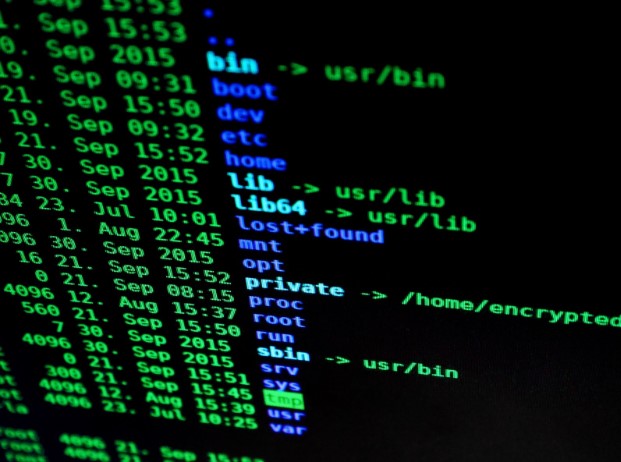The term kill chain is derived from the military. It defines the steps that an opponent or enemy uses to attack a target. It outlines a step-by-step approach to identifying and halting enemy activity.
Most of the cyber attacks in the present day implement a typical pattern to breach and exploit your company or organization's network. This is termed kill chain cyber. With the proper defenses, you can prevent it from causing damage or harm to your network.
The kill chain cyber was developed by Lockhead Martin, who used the military model to define the steps used in present-day's cyber attacks. The kill chain cyber is a part of the Intelligence Driven Defense model for the identification and thwarting of cyber intrusions activity. It pinpoints the steps the adversary needs to complete to achieve their targets or objectives.
To protect your network from threats, as such, you should visit xcitium for a strong and enhanced cover of protection.
Layers Of Security Provided Against Kill Chain Cyber
The following layers of EDR security and control implementation are supplied in the chance of security breaches:
1. DetectThe first level determines when and how an adversary is carrying out reconnaissance against your company, organization, or network. It affirms the attempts made to penetrate the organization.
2. DenyThis step obstructs the attack from taking place and when they are happening, and it thwarts unauthorized access or the revelation of information.

It hinders or misdirects the exfiltration of data or information to the adversary.
4. DegradeThe fourth step limits the offense's effectiveness or efficiency, and it creates measures that minimize the ill effects of the attack.
5. DeceiveIt interferes with the attack through misinformation or misdirection. In this way, it creates a decoy and misleads the attacker by providing them with false information.
6. ContainAs the name goes, the last step involves containing and limiting the scope of the offense, and this helps restrict the breach to a specific part of the organization or the company.
The Implementation Of Security Protocols In Each Phase Of The Kill Chain Cyber
The kill chain cyber controls matrix is built to identify the controls your company has implemented at different attack stages of the kill chain cyber. It also assists in stopping, eliminating, or disrupting the flow of a cyberattack.
1.ReconnaissanceThis stage in the kill chain cyber includes the research of potential targets and threats before the attack infiltrates your system or network.
Detect:- Web analytics
- Threat Intelligence
- Network Intrusion Detection System (NIDS)
- Information Sharing Policy
- Firewall Access Control Lists (ACLs)
After the adversary has gathered the necessary information on their target, they use the latter's weaknesses to exploit them.
Detect:- Threat Intelligence
- Network Intrusion Detection System (NIDS)
- Network Intrusion Prevention System
The adversary launches their attack with different methods like email attachments, USB drives, and other infiltration practices.
Detect:- Endpoint Malware Protection
- Change Management
- Application Allowlisting
- Proxy Filter
- Host-Based Intrusion Prevention System
- Inline Anti-Virus
- Queuing
- Router Access Control Lists
- App-aware Firewall
- Trust Zones
- Inter-zone Network Intrusion Detection System
The further intrusion of the malware occurs in this stage as the security breaching continues.
Detect:- Endpoint Malware Protection
- Host-Based Intrusion Detection System
- Secure Password
- Patch Management
- Data Execution Prevention
- App-aware Firewall
- Trust Zones
- Inter-zone Network Intrusion Detection System
The malware lodges an access point for the attacker known as a backdoor. This stage is vital for halting the malware attack by utilizing techniques such as the HIPS (Host-based Intrusion Prevention System).
Detect:- Security Information and Event Management (SIEM)
- Host-Based Intrusion Detection System
- Privilege Separation
- Strong Passwords
- Two-factor Authentication
- Router Access Control Lists
- App-aware Firewall
- Trust Zones
- Inter-zone Network Intrusion Detection System
The malware delivers the attacker access to the target's network or system. The attackers can now use the malware to control their target network's identity or device remotely.
Detect:- Network Intrusion Detection System
- Host-Based Intrusion Detection System
- Firewall Access Control Lists
- Network Segmentation
- Host-Based Intrusion Prevention System
- Tarpit
- Domain Name System Redirect
- Trust Zones
- Domain Name System Sinkholes
Data extraction from the target's network to fulfill the attacker's ultimate goals takes place in this stage.
Detect:- Endpoint Malware Protection
- Data-at-rest Encryption
- Endpoint Malware Protection
- Quality of Service
- Honeypot
- Incident Response
In the conclusive stage of exfiltration, the data is extracted from the victim's system by the adversary.
Detect:- Data Loss Prevention (DLP)
- SIEM
- Egress Filtering
- DLP
- Firewall Access Control Lists

One of the most common mistakes organizations makes is to turn a blind eye to cybersecurity vulnerabilities kept open for security threats and attacks. Constant security alerts and validation across the kill chain cyber boosts the organization's security by identifying, preventing, hindering, and preparing for any such threats or offenses. To protect your organization from such threats and security breaches of kill chain cyber, visit xcitium to provide you with enhanced protection and prevent any future incursions through kill chain cyber.
